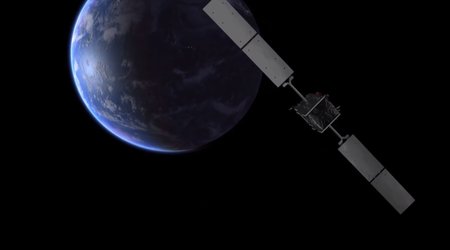Galileo receivers
The Galileo global navigation satellite system will employ many new methods and technologies to offer superior performance and reliability. Development of the advanced receivers required to make use of the system is continuing.
Three receiver development activities have been initiated within the Galileo programme, addressing the different needs of the system development process and covering the range of signals and services that will be offered.
Activities in receiver development are in the following areas:
- test user segment
- receivers for the signals transmitted by the first, experimental satellites
- receivers for the Galileo receiver chain
Test user segment
The test user segment is being used for system validation and signal experimentation. Two parallel developments have been performed, with the aim of securing equipment availability and achieving the highest confidence in the results. The test user segment consists of:
- a test user receiver for the open, commercial and safety-of-life services
- a test user receiver for the public, regulated service
- search and rescue test beacon equipment
- test support tools, such as a simulator for the satellite constellation
The receivers are based on a highly flexible software-defined concept implementing 14 different receiver configurations. They are able to emulate different receiver classes and provide a variety of internal measurements when combined with an analysis sub-system running on an attached laptop computer.
Experimental satellite receivers
These receivers are being used to receive the signals that are transmitted by the first, experimental satellite. They serve both as reference receivers for Galileo sensor stations and as experimental receivers for field tests.
Galileo receiver chain
Galileo sensor stations will be equipped with high-performance, ultra-reliable receivers. The stations provide measurement data to the Galileo system central processing facilities for establishing system integrity and performing satellite orbit determination and time synchronisation.
First achievements
The objectives of the initial part of the design phase for the test user segment have been fully achieved. A prototype receiver has been constructed, which is capable of receiving all Galileo signal components on all carriers defined in the current specification. The feasibility of acquiring and tracking the new Galileo signals has been proven.
Prototype receivers have also been used for verification of the payloads on the experimental satellites,
The Interface Control Document (ICD) for Galileo is available on the European Commission website, so receiver manufacturers can already work to prepare the acquisition of real Galileo data.




